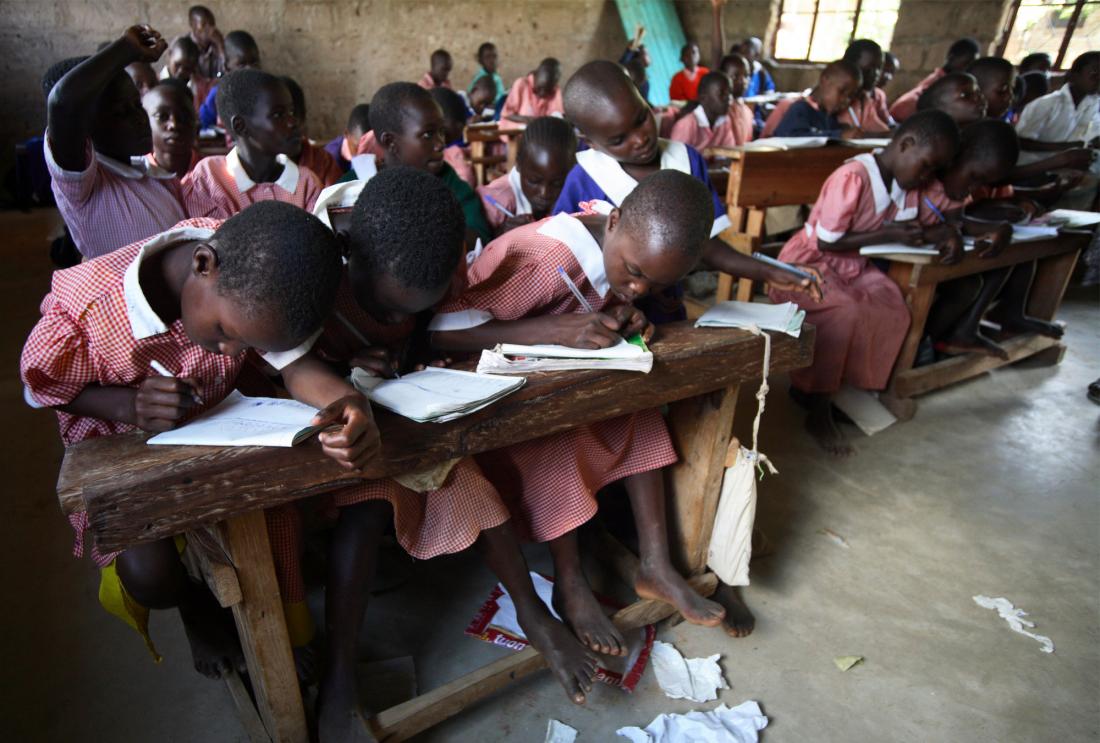Teacher Incentives Based on Students' Test Scores in Kenya
- Primary schools
- Teachers
- Rural population
- Student learning
- Performance-based pay
Though many countries have expanded primary school access over the past decade, concerns persist about education quality in low- and middle-income countries. In partnership with International Child Support, researchers designed and evaluated an incentives program that provided salary bonuses to teachers in Kenya based on the performance of their school as a whole on annual district exams. While results show that the incentives program led to an increase in student test scores, researchers believe that this increase was due to improved test-taking strategies and "cramming," rather than an increase in overall knowledge. The program did not have an impact on test scores in the long-run.
Policy issue
Over the past decade, many developing countries have expanded primary school access, energized by initiatives such as the Millennium Development Goals which call for achieving universal primary education by 2015. However, these improvements in school access have not been accompanied by improvements in school quality. Poor learning outcomes may be due, in part, to high absence rates and low effort among teachers, who often lack strong incentives to perform well at work. Some argue that linking teachers' pay to students' performance may be a way to increase teacher effort; opponents argue this will result in “teaching the test” rather than better teaching of the curriculum.
Context of the evaluation
Learning outcomes in Kenya are poor: although the vast majority of Kenyan children attend primary school, less than half complete their primary education in rural areas. Government officials and policymakers are hopeful that improved education quality will enable individuals to attain higher levels of education. But more schools and an improved curriculum can only go so far—students must be met with a motivated teacher in their classroom. This is often not the case in Kenya; in Busia and Teso districts, teachers are absent on average 20 percent of the time. Teachers’ salaries depend on their education and experience, with no opportunity for performance-based promotion, which appears to result in a system with no incentives to teach well.

Details of the intervention
This study examines the effects of a teacher incentives program on both teacher behavior and student test scores in Kenya. Out of 100 schools which the Ministry of Education designated as particularly in need of assistance, 50 were randomly selected for the treatment, while the other 50 served as a comparison group. In collaboration with International Child Support (ICS), researchers designed and evaluated a program in Busia and Teso districts that provided prizes to teachers in grades 4 to 8 based on the performance of their school as a whole on the annual district exams. ICS offered in-kind prizes that ranged in value from 21 to 43 percent of the typical teacher’s monthly salary, values that were comparable to merit pay programs in the United States.
All teachers who taught grades 4 through 8 in the 50 treatment schools were eligible for prizes. The program awarded “Top-Scoring,” and “Most Improved” prizes, as well as second, third, and fourth place awards to teachers in winning schools. The program penalized teachers for dropouts by assigning low scores to students who did not take the exam, preventing them from selecting only the most qualified students to take the test. In all, prizes were awarded to 24 of the 50 participating schools.
Data were collected on many types of teacher effort—attendance, homework assignment, pedagogical techniques, and holding extra exam preparation sessions—as well as on student test scores after the end of the program. The program ran for two years beginning in 1998, with 1996 exam scores used to measure improvements.
Results and policy lessons
By the program’s second year, student test scores increased significantly in treatment schools. However, evidence suggests that this improvement did not necessarily occur through the intended channel of regular classroom teaching. Teacher attendance and student dropout and repetition rates did not improve, and no changes were seen in either homework assignment or pedagogy. Instead, teachers were more likely to conduct test-preparation sessions outside of normal class hours. Prior to the program, treatment schools were slightly less likely to offer test preparations, but after the introduction of the program, treatment schools were 4.2 percentage points more likely to conduct prep sessions in the first year and 7.4 percentage points more likely in the second. Furthermore, there was evidence that much of the increase in test scores was due to improved test-taking skills such as strategies for handling multiple-choice questions or “cramming” for tests that are prone to memorization, as opposed to increased overall knowledge. Lastly, test score improvements dropped off after the program was completed, implying there were little to no spillover effects of the test preparations onto actual learning.
In J-PAL's comparative cost-effectiveness analysis, the teacher incentives program did not have an impact on test scores in the first year but led to a 6.29 standard deviation improvement in test scores per US$100 spent in the second year. The program did not have an impact on long-run test scores. For more information, see the full comparative cost-effectiveness analysis.
Glewwe, Paul, Nauman Ilias, and Michael Kremer. 2010. "Teacher Incentives." American Economic Journal: Applied Economics 2(July): 205-7.


